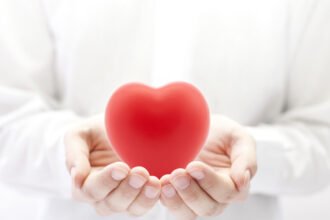

Ever since I was a child I was frustrated when I got incomplete answers to my, I’d like to think, probing questions. Why is the sky blue? Did you get a satisfactory answer to this question from your parents? Or, how could babies just pop out of their mommy’s tummy; how did they get there in the first place? Sometimes they simply didn’t know (question #1) or where embarrassed to tell the truth ( question #2), or the answer in those days wasn’t completely undrstood.
Fast forward to my college days. The zoology professor told us that all mammals have a special fat tissue called ‘brown fat’ whose function was to generate heat. Human babies have it too, but then it disappears as they grow up. Why? The answers ranged from a shrug to some dubious speculation (we lost it because we invented clothing to keep us warm). Either response was unsatisfactory.
I was guilty of this obfuscation as well. Why is it that we lose more calories than exercise alone would account for? Consider: A 16 oz. (grande) Starbucks Frappuchino chocolate chip contains 490 calories. Yet, people who run 2-3 miles a day burn only 200-300 calories. How come these runners don’t become obese very quickly? When I was asked this question I would fall back on the easy non-answer of ‘the lingering benefits of aerobic exercise long after the run itself’. But why does exercise have ‘lingering effects’? No convincing answer, just a lot of hand waving.
Finally, a good answer
Contrary to the general belief that we gradually lose our brown fat in childhood, several studies in 2009 showed that adults still have brown fat cells lurking in their bodies. As opposed to white fat, which contains fat droplets and is responsible for ’cellulitis’ and protruding potbellies, this peculiar fat is brown because it is chock full of mitochondria, tiny cellular organelles that generate lots of ATP, the energy currency of all living things. But stop to think about it; it still doesn’t answer the question of calorie loss through exercise, because generation of ATP is an efficient mechanism for energy conservation to fuel metabolic activity. And we know from animal studies that brown fat generates lots of heat, and not very much ATP.
A recent paper by Bruce Spiegelman’s group at Harvard finally provided the answer. The group found a new hormone, called irisin (after Iris, the
Greek goddess of the rainbow and messenger of the Olympian gods), that is generated in muscles by an exercise-induced gene called FNDC5. Irisin, circulating in the blood, causes the transformation of white fat cells into mitochondria-rich brown fat. But it doesn’t stop there; it also activates the thermogenic (heat-generating) mechanism of brown fat.
The way it does it is very ingenious. The process of oxidixing sugar is coupled to another process that captures the energy generated by the oxidation and harnesses it into molecules of ATP, a process called oxidative phosphorylation. What Irisin does is uncouple the two. So now we have oxidation of glucose but without capturing the generated energy to form ATP. Result: the energy is “wasted” in the form of heat. That’s why we feel warm even hours after exercise, and that’s how we lose the calories (BTW, calorie comes from Calor, which is heat or warmth in Latin).
Every answer raises more questions
When you think about it, there is a lurking paradox here: why would physical activity induce a program that burns fat stores without the benefit of ATP formation? This would seemingly lead to a cycle that would deplete available fuel stores for the exercising muscle. But, there may actually be an adaptive advantage in generating all this heat: it allows for adaptation to cold environments. We don’t have to travel far (phylogenetically speaking) to realize the inherent selective advantage. Without it humans (and our cousins Neanderthals and the recently-discovered Denisovans) would not have survived the ice age of northern Europe, and all political prisoners in Siberia would have perished. But instead, they shivered, which is a muscle activity that activates the formation of irisin. Plausible theory, but it needs to be tested.
It is not just “academic”
What is the practical utility of this finding? Since irisin is linked to weight control, I am certain that pharmaceutical companies are already hard at work designing drugs that will either cause irisin release, or mimic its action. Either way, it could prove a boon in the fight against obesity and type 2 diabetes.
Does it also spell the end of the need to exercise? I hope not. No amount of calorie loss can give you the psychic benefit of a good workout.
photo:YanLev/shutterstock











